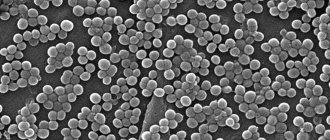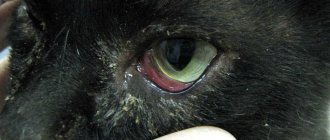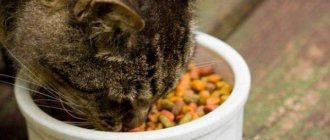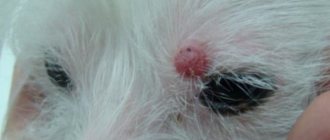The process of inflammation affecting the mucous membrane inside the eye (conjunctiva) is called conjunctivitis. Itching in the eyes and under the eyelids, their swelling and tearing with characteristic purulent or mucous discharge indicates the presence of this disease. Conjunctivitis in dogs varies greatly in symptoms and treatment; what to do and how to treat it depends on the form of inflammation.
Reasons for appearance
Common causes of conjunctivitis in animals are:
- traumatic conjunctivitis can occur due to a branch, stick, sand, or grain getting into the eye;
- excessive exposure to UV rays;
- parasites (external and helminths);
- bacteria provoke a purulent process;
- some viruses;
- inflammation can spread from nearby inflamed tissues;
- ingress of various substances (household chemicals, construction dust);
- allergies to paints, dust, pollen.
Purulent conjunctivitis in a puppy has a special etiology - intrauterine infections. As a result, physiological ankyloblepharon - fusion of the eyelids - can develop.
Effective treatment of conjunctivitis in dogs
Quite often it happens that the dog’s health condition does not cause concern, however, the appearance of purulent discharge in the medial (closest to the nose) corners of the eyes is a serious reason for the dog owner to be wary.
The appearance of pus coming from the corners of the eyes is a sign of conjunctivitis - inflammation of the mucous membrane of the eye (conjunctiva).
There may be several reasons for this, however, the most common cause of eye inflammation may be a bacterial infection against the background of reduced immunity.
There are many recipes for the treatment of conjunctivitis: from the relatively ineffective and safe rubbing of the eyes with a chilled tea solution to the risk of blindness instilling a strong soda solution into the eyes.
We live in an age of development of the pharmaceutical industry, so your choice of treatment method must be made in favor of highly effective drugs with minimal side effects.
So, if your dog’s symptoms show signs of conjunctivitis, then you should start intensive antimicrobial eye therapy as soon as possible to avoid deterioration of your pet’s health.
Treatment of both eyes should be carried out simultaneously, even if only one of them is infected.
First, you need to purchase eye drops at any pharmacy - a 0.25% solution of chloramphenicol (chloramphenicol). It is best to buy this medicine in a plastic dropper bottle. Levomycetin does not irritate the mucous membrane of the eye, so dogs tolerate the treatment procedure calmly.
Before the procedure, the dog should be petted and calmed. Next, you need to use your thumb and forefinger to fix the upper and lower eyelids in an open state (without pressure and without excessively opening the eyelids).
You need to keep the dropper bottle at a distance of 5-7 centimeters from the eye so that the drops, under the influence of gravity, come off the spout of the bottle and fall into the eye. By carefully pressing on the dropper bottle, 1-2 drops of the medicinal solution are dosed into the dog's eye (preferably under the lower eyelid). The second eye is treated in a similar way.
During the day, the procedure must be repeated 3-4 times.
The entire course of treatment lasts 6-7 days (at least 6, but not more than 10).
If an animal experiences any side effects during treatment with chloramphenicol, treatment should be stopped and contact a veterinarian.
If, after completing the course of treatment (maximum period of 10 days), noticeable improvements have not occurred, you should consult a veterinarian.
Previous article When a puppy needs to open its eyes, problems with opening, how to help? Next article The most fashionable dog breeds
drug66.ru
Symptoms of the disease
Clinical signs may have varying degrees of severity in acute and chronic forms of the disease:
- at the first stage, abundant tear production is observed;
- the conjunctiva becomes red and inflamed;
- the dog tries to scratch its eyes with its paws, rubs its muzzle on foreign objects;
- fear of light appears, the pet hides in the shadows;
- exudate of pathological color, smell, consistency is released from the eye;
- Dried crusts of exudate are observed on the eyelids, and hair in this area may fall out.
Conjunctivitis in animals according to the clinical picture is divided into the following types:
- Follicular conjunctivitis is usually a complication. A characteristic feature is reddish “blisters” on the third eyelid, which makes the conjunctiva look like raspberries. The causes of this pathology are enlarged lymphatic vesicles under the surface of the conjunctiva. Inflamed follicles require surgical removal. Other symptoms are the same: photophobia, lacrimation, mucous or purulent exudate, itching and pain in the eye sockets.
- Purulent conjunctivitis is one of the most dangerous types of the disease. Both eyes are usually infected, and there is decreased appetite, lethargy, pain in the eyes and eyelids, temperature changes, and severe swelling of the eyelids. The exudate is purulent, white, yellow or dirty yellow (in the chronic form) in color, often with an unpleasant odor. Pus, accumulating, sticks the eyelids together, making it difficult for your pet to open his eyes in the morning. In the chronic form, the amount of exudate decreases, but it becomes thicker, the conjunctiva acquires a bluish tint. The cause of the disease is bacterial or fungal infection, and a concomitant factor is low immunity.
- Allergic conjunctivitis in dogs usually occurs with mucous discharge, the exudate being almost transparent. The conjunctiva is red, but does not bleed, the eyeballs are red, often allergic reactions (redness) are visible on the skin, nasal planum (if the nose is not pigmented). A characteristic feature is the rapid development of conjunctivitis without objective reasons. Also a sign of an allergic form is the absence of other alarming symptoms.
- Catarrhal conjunctivitis . In the acute form, the eyelids swell, profuse lacrimation is observed, which is then replaced by thick mucous discharge. The exudate accumulates on the inner corner of the eye, where it hardens, sticking the hair together. In the chronic form, lacrimation is scanty, photophobia may be absent. The conjunctiva is moderately red, velvety. Swelling of the eyelids is mild or absent. Periodically, the disease worsens, then acute symptoms are observed.
- Chlamydial conjunctivitis is caused by chlamydia and has a special clinical picture, so it can be distinguished separately. The disease completely affects the upper respiratory tract, affecting the mucous membranes of the throat, pharynx, nose, and conjunctiva. First, one eye becomes red and swollen, and then the other. The conjunctiva becomes bright red. Symptoms reach their peak in the second week, then within 2-3 weeks the symptoms subside. But with weak immunity, the disease can remain for a long time.
- Viral conjunctivitis is characterized by serous discharge; it is liquid, cloudy, and sometimes slightly opalescent. With this form of inflammation, other signs of the disease are always noticeable. Caused by plague viruses, herpes, adenoviruses and other pathogens. Many viral infections are difficult to tolerate, and symptoms often develop that threaten the pet’s life.
- Parenchymal (phlegmonous) conjunctivitis is distinguished by the fact that the inflammatory process penetrates deep inside and affects the parenchyma. The conjunctiva is bright red and bleeds instantly at the slightest touch. The palpebral fissure is greatly narrowed, often part of the conjunctiva protrudes outward. The cause of the disease is an infectious infection, so the exudate is purulent.
- Fibrinous conjunctivitis appears with some infectious diseases, radiation and chemical burns. White fibrinous films are found on the surface of the conjunctiva, under which necrotic processes develop. In the lobar form, they are easily removed, and the conjunctiva underneath them bleeds heavily. With the diphtheroid form, the films cannot be removed, since they spread to the deep layers of the mucous membrane.
Features of ear and eye drops for animals
Special medications help eliminate itching in allergic conjunctivitis and stop the development of a bacterial or fungal infection. Drops are also used for chronic purulent-inflammatory diseases.
There are several types of drops for animals:
- anti-inflammatory - relieve swelling, reduce the manifestation of inflammatory reactions;
- antiseptic - have a disinfecting effect, are used to sanitize the eyes or ears, and have an antiallergic effect;
- antiviral - prevent the development of complications during viral infections, increase the rate of cell regeneration;
- antibacterial - inhibit the proliferation of pathogenic microorganisms, prevent complications after surgical interventions;
- moisturizing - eliminate dryness, maintain the normal moisture balance of the cornea or ears;
- antihistamines - stop redness, relieve swelling and other manifestations of allergies.
There are also special products that help more effectively cleanse your pet’s ears and eyes of natural secretions. Regular hygiene helps maintain the health of the animal: it prevents pathogenic bacteria and fungi from multiplying.
Drops should be chosen on the recommendation of a veterinarian, taking into account the age and condition of the pet. Before purchasing this or that drug, consult a specialist. The doctor will make a diagnosis taking into account the symptoms, after which he will prescribe the appropriate treatment and select the appropriate drug.
Disease prognosis
Depending on the form of conjunctivitis, the prognosis for the disease is different:
- Catarrhal conjunctivitis. In the acute form it is favorable, in the chronic form it is cautious.
- Follicular conjunctivitis. It is usually favorable, but relapses are possible in the future.
- Purulent conjunctivitis. With timely treatment, the prognosis is favorable, with an advanced disease - cautious (scar formation is possible), if the cornea is involved in the process - unfavorable (the dog goes blind).
- Allergic conjunctivitis. The prognosis is always favorable; caution can be exercised only in very advanced cases.
- Chlamydial conjunctivitis. Cautious in puppies, in adult animals – favorable if handled in a timely manner.
- Viral conjunctivitis. The prognosis depends on the infection, the type of pathogen, immunity and the general condition of the animal. Usually he is cautious, but with carnivore plague he is unfavorable.
- Parenchymal (phlegmonous) conjunctivitis. The prognosis is cautious, since inflammation can spread to the cornea through panophthalmitis or retrobulbar phlegmon or trigger the development of sepsis.
- Fibrinous conjunctivitis. Usually cautious (possible scarring and distortion of the eyelids) or unfavorable (the animal goes blind).
Contagiousness of conjunctivitis
Important! Conjunctivitis of viral or bacterial etiology is contagious to humans.
The disease can be transmitted by airborne droplets or contact. Most people become infected during treatment at home, so you need to maintain personal hygiene to prevent the bacteria from being transferred to yourself. Infection with fungal conjunctivitis occurs when the immune system is weakened, so for prevention you should take multivitamins. Still, the risk is insignificant, the main thing is to maintain personal hygiene.
Treatment of conjunctivitis
Treatment of conjunctivitis in dogs depends on the form of inflammation, and in case of infectious etiology, on the type of pathogen:
- Catarrhal type. For traumatic conjunctivitis, symptomatic treatment and anti-inflammatory drugs are sufficient.
- Purulent inflammation, as well as parenchymal, chlamydial and fibrinous conjunctivitis . Antibiotics, anti-inflammatory drugs are prescribed, and symptomatic treatment is carried out, to which antipyretics are added.
- Allergic conjunctivitis. Symptomatic treatment is sufficient; antihistamines must be prescribed.
- Viral conjunctivitis requires antiviral agents. Symptomatic therapy and anti-inflammatory drugs are prescribed.
Symptomatic therapy
Elimination of symptoms is necessary so that the animal can more easily tolerate the disease. To do this, clear the eyes of exudate and prescribe painkillers and antipyretics.
Important! The use of human antipyretic and analgesic drugs for dogs is strictly prohibited!
A pet can get severe poisoning from Nurofen or Tetraflex, and fatalities are often observed from Aspirin. All these drugs cause severe gastrointestinal bleeding, turning the gastrointestinal tract into a sieve. You can only use special veterinary drugs, preferably the latest generation.
Drops
First of all, eye drops are used; they have a strong local effect and at the same time a complete absence of side effects and contraindications:
- Drops "Iris". A drug specially created for the treatment of conjunctivitis in pets. For dogs, 1-3 drops are enough, depending on the size of the pet; use 1-2 times a day until the symptoms disappear. There are no side effects if the dosages are observed. Not recommended for hypersensitivity to the product.
- Drops "Conjunctivitis". It is a complex remedy with analgesic, anti-inflammatory and bactericidal effects. Dosage: 2-4 drops in each eye 3-4 times a day. Use until symptoms disappear; if the dosage is followed, there will be no side effects.
- Drops "Maksidin" . A complex drug with anti-inflammatory and antiviral effects. The product was created specifically for the treatment of conjunctivitis in patients. Dosage: 1-2 drops 2-3 times a day. There are no contraindications or side effects.
Ofthalmosan
This is a drug that helps cure animals with various eye diseases. Contains: chlorhexidine digluconate + calendula flower extract + chamomile flower extract + eyebright extract + succinic acid, as well as auxiliary agents that relieve inflammation and relieve pain.
The product effectively fights various types of bacteria. Ofthalmosan is a drug that is classified as a low-hazard and low-toxic drug for warm-blooded animals. Oftalmosan can be used to prevent eye diseases. It has excellent both analgesic and anti-inflammatory effects. In prescribed doses it does not cause allergic reactions or irritation.
These eye drops for cats and dogs are used to treat animals that are sick with various forms of conjunctivitis (by the way, there is bacterial, viral and allergic), scleritis (inflammation of the sclera) and blepharitis (inflammation of the eyelids). The drug is also suitable for washing various wounds in the eye area (domestic, but also post-operative).
Oftalmosan is instilled 2-3 drops into the animal's eyes 1 to 3 times a day. The course of treatment is no more than 14 days.
Repeat until all clinical signs of the existing disease completely disappear. No allergic reactions or side effects were observed when following the instructions. An individual reaction of the animal to the components of the drug is possible. The drug has no contraindications.
Still, don’t try to treat your animal’s eyes on your own; it’s better to consult a veterinarian. Our veterinary clinic in Chekhov will always guide you on which eye drops for animals will best cope with this type of infection.











